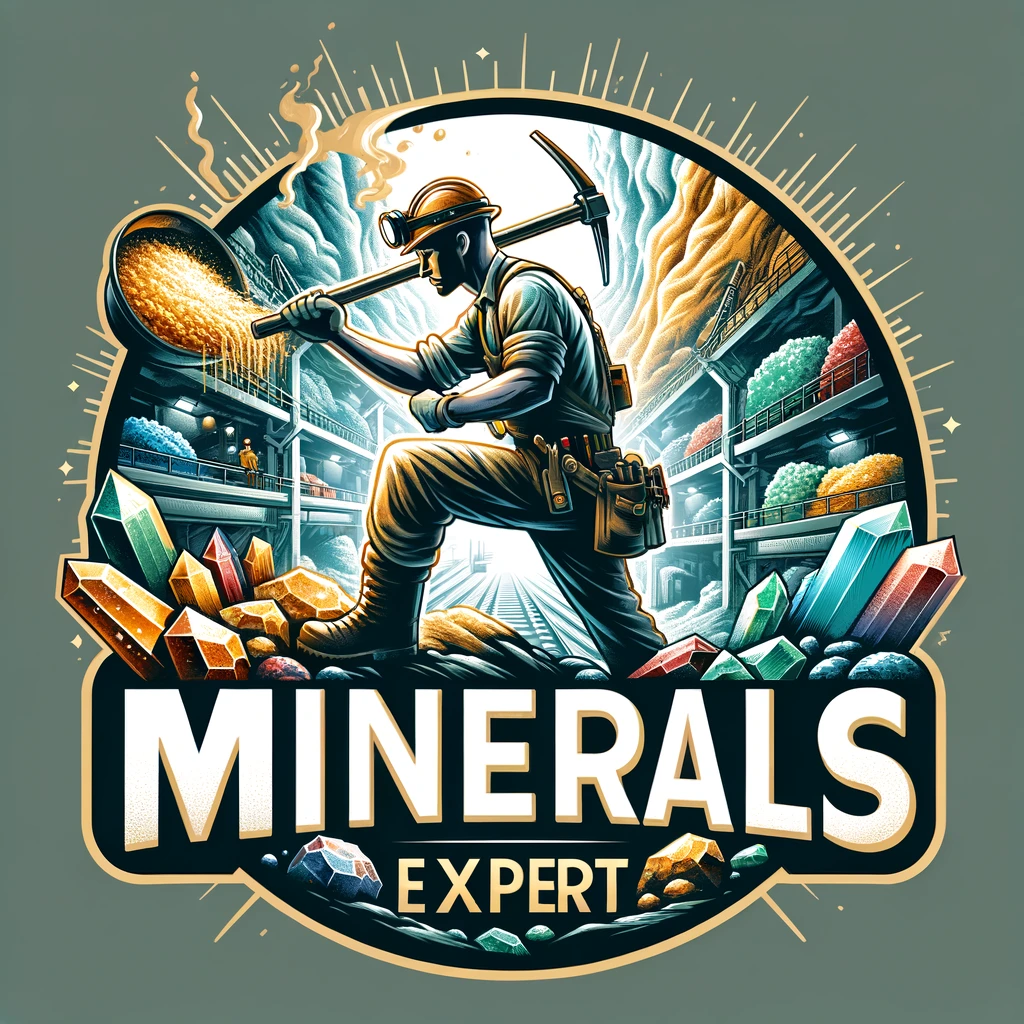Eco-friendly Options For Spiritual Cooking And Food Preparation
You may not often think about the impact that your cooking and food preparation methods have on the environment, but the truth is that there are a variety of ways to make your kitchen practices more eco-friendly. From using sustainable ingredients to choosing energy-efficient appliances, making small changes in your culinary routine can have a big impact on the planet. In this article, we will explore some of the best eco-friendly options for spiritual cooking and food preparation, allowing you to nourish both your body and your soul in an environmentally conscious way.
Eco-friendly Cookware
When it comes to eco-friendly cookware options, there are several materials to consider. These materials not only minimize the environmental impact but also offer excellent cooking performance and durability. Let’s explore some of the top choices for eco-friendly cookware.
Cast Iron Cookware
Cast iron cookware has been used for centuries and is known for its longevity and excellent heat retention. It is made by pouring molten iron into a mold, creating a sturdy and durable cooking surface. Cast iron pans can be used both on the stovetop and in the oven, making them versatile for various cooking techniques. They require a bit of maintenance, such as seasoning, to keep them in good condition, but with proper care, they can last for generations.
Stainless Steel Cookware
Stainless steel cookware is another popular choice for eco-conscious cooks. It is made from a combination of metals, including iron, chromium, and nickel, which give it its durability and corrosion-resistant properties. Stainless steel pans are non-reactive, meaning they won’t affect the taste or quality of your food. They are also easy to clean and maintain, and many modern stainless steel cookware sets are induction-compatible, making them energy-efficient.
Copper Cookware
Copper cookware is not only stunning to look at but also a great conductor of heat. It provides precise temperature control, making it ideal for delicate dishes and sauces. Copper pans are often lined with stainless steel or tin to prevent any potential reactivity with certain foods. While copper cookware can be expensive, it is a long-lasting investment that can be passed down through generations.
Glass Cookware
Glass cookware is a safe and sustainable option for eco-conscious cooks. It is made from natural materials like sand and doesn’t leach any harmful chemicals into your food. Glass dishes are versatile and can be used in the oven, microwave, and freezer. They are also easy to clean and resistant to staining or absorbing odors. Glass cookware is available in various sizes and shapes, making it suitable for baking, roasting, and serving.
Bamboo Cookware
Bamboo cookware is an excellent choice for eco-conscious cooks who prefer a natural and sustainable material. Bamboo is fast-growing and renewable, making it an eco-friendly alternative to traditional wood. It is lightweight, yet strong, and can withstand high temperatures. Bamboo cookware is often used for steaming baskets, cutting boards, and utensils. It adds a touch of natural beauty to your kitchen while reducing your ecological footprint.
Sustainable Utensils
Using sustainable utensils is another way to make your cooking experience more eco-friendly. Here are some great options to consider.
Bamboo Utensils
Bamboo utensils are a fantastic sustainable alternative to plastic or metal utensils. They are lightweight, yet durable, and won’t scratch your cookware. Bamboo is a fast-growing plant and can be harvested without causing any harm to the environment. Bamboo utensils are naturally antimicrobial, making them easy to clean and maintain. They are perfect for stirring, flipping, and serving your delicious meals.
Wooden Utensils
Wooden utensils have been used for centuries, and for a good reason. They offer a natural and rustic appeal to your kitchen while being eco-friendly. Wooden utensils are gentle on your cookware, preventing scratches and damage. They are also non-reactive and won’t affect the taste of your food. Wood is a renewable resource, and many wooden utensils are made from sustainable sources. Just remember to hand wash your wooden utensils and allow them to air dry to prolong their lifespan.
Stainless Steel Utensils
Stainless steel utensils are highly durable, long-lasting, and easy to clean. They are a great eco-friendly option as they can be reused indefinitely, reducing the need for disposable utensils. Stainless steel is also corrosion-resistant, making it suitable for both acidic and alkaline foods. Look for utensils made from high-quality stainless steel to ensure their longevity and avoid any potential rusting.
Silicone Utensils
Silicone utensils offer a flexible and heat-resistant option for eco-friendly cooking. They are made from a synthetic material derived from silica, a natural substance found in sand. Silicone utensils are gentle on your cookware, preventing scratches and damage. They are also non-stick, making them easy to clean. Silicone is a durable material that can withstand high temperatures, making these utensils perfect for all your cooking needs.
Natural Cutting Boards
Having a sturdy and eco-friendly cutting board is essential in every kitchen. Here are some great options to consider for your chopping and slicing needs.
Wooden Cutting Boards
Wooden cutting boards are a classic and sustainable choice for eco-conscious cooks. They are gentle on your knives, helping to maintain their sharpness. Wood is a natural and renewable material, making it an environmentally friendly option. Look for cutting boards made from sustainably sourced wood, such as bamboo or hardwoods like maple or walnut. Wooden cutting boards are also naturally antimicrobial, making them hygienic for food preparation.
Bamboo Cutting Boards
Bamboo cutting boards are not only sustainable but also highly durable. Bamboo is a fast-growing plant that can be harvested without causing any harm to the environment. Bamboo cutting boards are lightweight, yet strong, and won’t dull your knives. They are resistant to moisture, minimizing the risk of warping or cracking. To keep your bamboo cutting boards in top condition, ensure you clean them thoroughly, dry them properly, and periodically apply food-safe mineral oil.
Glass Cutting Boards
Glass cutting boards offer a sleek and hygienic surface for food preparation. They are non-porous, preventing the absorption of odors or bacteria. Glass cutting boards are also heat-resistant, allowing you to place hot pots and pans directly on them. They are easy to clean and can be sanitized at high temperatures in the dishwasher. However, it’s important to note that glass cutting boards can be hard on your knives, leading to premature dullness.
Stone Cutting Boards
Stone cutting boards, such as granite or marble, provide a beautiful and durable surface for cutting and slicing. They are naturally cool, making them great for working with dough or pastry. Stone cutting boards are also non-porous and won’t harbor bacteria or odors. However, they can be heavy and require proper care to avoid any potential cracking or staining. Regularly clean and seal your stone cutting board to maintain its longevity.
Organic Spice and Herb Containers
Proper storage of spices and herbs is essential to maintain their freshness and flavor. Here are some eco-friendly options for your organic spice and herb containers.
Glass Jars with Airtight Lids
Glass jars with airtight lids are a fantastic choice for storing your spices and herbs. They are non-reactive, ensuring that the flavors and aromas remain intact. Glass is also a recyclable material, making it an eco-friendly option. Choose jars with tight-fitting lids to keep your spices fresh and protected from moisture and air. Clear glass jars are ideal as they allow you to easily see and identify your spices.
Ceramic Spice Containers
Ceramic spice containers offer both functionality and style to your kitchen. They come in various shapes, sizes, and colors to suit your personal taste. Ceramic is a durable and non-reactive material that won’t affect the quality of your spices. Look for containers with airtight lids to preserve the freshness and potency of your herbs and spices. Ceramic spice containers can be reused for years, minimizing the need for single-use plastic or disposable containers.
Stainless Steel Spice Tins
Stainless steel spice tins are a sleek and eco-friendly option for storing your spices and herbs. They are durable, long-lasting, and won’t leach any harmful chemicals into your ingredients. Stainless steel is also easy to clean and doesn’t absorb flavors or odors. Look for spice tins with tight-sealing lids to protect your spices from moisture and light. Stainless steel spice tins can be reused indefinitely, reducing the need for disposable spice packaging.
Bamboo Spice Containers
Bamboo spice containers offer a natural and sustainable option for storing your spices and herbs. Bamboo is a renewable resource that can be harvested without causing any harm to the environment. Bamboo containers are beautiful, lightweight, and easy to handle. They often come with airtight lids to keep your spices fresh. Bamboo spice containers not only store your ingredients but also add a touch of elegance to your kitchen decor.
Efficient Energy Use
To further reduce your environmental impact in the kitchen, consider utilizing efficient energy use practices and appliances. Here are some eco-friendly options to help you on your sustainable cooking journey.
Induction Cooktops
Induction cooktops are a highly energy-efficient option for eco-conscious cooks. Unlike traditional electric or gas stovetops, induction cooktops use magnetic fields to heat the cookware directly. This results in faster heating and precise temperature control, reducing cooking times and energy consumption. Induction cooktops only produce heat when in contact with an induction-compatible pot or pan, making them safe and efficient.
Energy Star-rated Appliances
Choosing Energy Star-rated appliances is a smart choice for reducing energy consumption in your kitchen. Energy Star-certified appliances, such as refrigerators, dishwashers, and ovens, meet strict energy efficiency guidelines set by the Environmental Protection Agency (EPA). These appliances are designed to use less energy without compromising performance. Look for the Energy Star label when shopping for new appliances to ensure you are making an environmentally conscious decision.
Solar-powered Appliances
Solar-powered appliances utilize the sun’s energy to operate, reducing your reliance on traditional electricity sources. While many kitchen appliances are not currently available in solar-powered versions, there are options like solar-powered ovens and solar-powered water heaters that can help reduce your energy consumption. Consider incorporating solar-powered appliances into your kitchen to take advantage of renewable energy and decrease your carbon footprint.
Slow Cookers
Slow cookers, also known as crock-pots, are an excellent eco-friendly option for energy-efficient cooking. These appliances use low and steady heat over an extended period, allowing you to tenderize tough cuts of meat and infuse flavors into your dishes. The slow cooking process requires less energy compared to traditional stovetop or oven cooking. Additionally, slow cookers are great for batch cooking, reducing the need for multiple cooking sessions.
Composting and Waste Reduction
Minimizing food waste and finding sustainable solutions for kitchen waste are important steps towards an eco-friendly lifestyle. Here are some practices and tools to help you compost and reduce waste in the kitchen.
Compost Bins
Composting is a natural process that allows organic waste to break down into nutrient-rich soil. Having a compost bin in your kitchen is a convenient way to collect fruit and vegetable scraps, coffee grounds, eggshells, and other biodegradable materials. Look for compost bins that have a tight-sealing lid and are odor-resistant to prevent any unwelcome smells in your kitchen. Composting reduces the amount of waste sent to landfill and provides valuable compost for your garden.
Vermicomposting
Vermicomposting is a special type of composting that involves using worms to break down organic waste. You can set up a vermicomposting system in your kitchen using a worm bin and specific types of worms, such as red wigglers. The worms consume the kitchen scraps and turn them into nutrient-rich worm castings or vermicompost. Vermicomposting is a great way to utilize food waste and create high-quality compost that is beneficial for your plants.
Food Scraps for Stock
Instead of throwing away vegetable scraps, consider using them to make flavorful homemade stocks. Vegetables like onion peels, carrot tops, and herb stems can add depth and richness to your stocks. Collect these scraps in a container in your freezer until you have enough to make a batch of stock. Simmering food scraps with water and seasonings creates a savory and sustainable alternative to store-bought stock. Once strained, the leftover solids can be composted.
Reusable Food Storage Bags
Reducing the use of single-use plastic in the kitchen is an essential step towards waste reduction. Instead of disposable plastic bags, consider using reusable food storage bags made from silicone, fabric, or glass. These bags are durable, easy to clean, and can be used for storing leftovers, lunches, and snacks. By choosing reusable food storage bags, you help minimize plastic waste and contribute to a more sustainable future.
Sustainable Food Sources
Supporting sustainable food sources is crucial for both the environment and our overall well-being. Here are some eco-friendly practices and initiatives to consider when choosing your food.
Local and Seasonal Produce
Opting for local and seasonal produce is a great way to reduce your carbon footprint and support your local economy. Locally grown produce requires less transportation and refrigeration, resulting in lower energy consumption and fewer greenhouse gas emissions. Additionally, choosing seasonal produce allows you to enjoy the freshest flavors and nutritional benefits. Visit farmers’ markets or join community-supported agriculture (CSA) programs to access a wide variety of local and seasonal fruits and vegetables.
Organic Farming
Organic farming practices promote sustainable agriculture by prioritizing soil health and biodiversity. Organic farmers avoid the use of synthetic pesticides and genetically modified organisms (GMOs). By choosing organic produce, you support sustainable farming methods that minimize the impact on the environment and prioritize the health of consumers. Look for the USDA organic seal when purchasing organic fruits, vegetables, and other organic products.
Community Supported Agriculture (CSA)
Community Supported Agriculture (CSA) is a unique way to directly support local farmers and access fresh, locally grown produce. CSA programs allow individuals to purchase a share of the farm’s crop at the beginning of the growing season. Throughout the season, CSA members receive weekly or biweekly boxes of fresh produce straight from the farm. CSA not only provides you with a variety of seasonal fruits and vegetables but also strengthens the connection between consumers and local farmers.
Reducing Food Waste
Reducing food waste is an essential practice for sustainable cooking. Plan your meals ahead, make shopping lists, and buy only what you need to minimize food waste. Properly store leftovers and use them in creative ways to prevent spoilage. Additionally, consider donating excess food to local food banks or composting organic waste. By reducing food waste, you contribute to conserving resources, reducing greenhouse gas emissions, and addressing food insecurity issues.
Herb and Vegetable Gardens
Growing your own herbs and vegetables is a rewarding and sustainable way to enhance your cooking. Here are some options to consider for your herb and vegetable gardens.
Indoor Herb Gardens
Indoor herb gardens are a convenient option for year-round access to fresh herbs. You can grow herbs like basil, thyme, and parsley in small pots or vertical planters near a window with sufficient sunlight. Indoor herb gardens not only provide you with a continuous supply of aromatic herbs but also serve as a natural air purifier. Snipping herbs from your own garden ensures the freshest flavors in your culinary creations.
Roof-Top Gardens
If you have access to a rooftop or balcony, consider creating a rooftop garden for growing herbs and vegetables. Utilizing vertical space allows you to maximize your urban gardening potential. Choose lightweight containers and utilize proper drainage to avoid any structural issues. Roof-top gardens can provide a peaceful oasis in the city and offer a sustainable way to grow your own produce.
Community Gardens
Community gardens are shared green spaces where individuals can grow plants, vegetables, and herbs collectively. Joining a community garden not only allows you to grow your own food but also fosters a sense of community and knowledge sharing. Community gardens often provide education and resources to support sustainable gardening practices. By participating in a community garden, you contribute to creating green spaces and promoting sustainable food production.
Windowsill Vegetable Gardens
Windowsill vegetable gardens are a great option for those with limited outdoor space. You can grow a variety of vegetables, such as cherry tomatoes, peppers, and salad greens, in small pots or shallow containers near a sunny window. Windowsill vegetable gardens offer the convenience of fresh produce right at your fingertips and are a fun way to engage in sustainable gardening practices.
Water Conservation
Conserving water is important for both the environment and water resources management. Here are some eco-friendly practices and technologies to help you save water in the kitchen.
Energy-efficient Dishwashers
Choosing an energy-efficient dishwasher can significantly reduce water consumption in your kitchen. Look for dishwashers with the Energy Star label, as they meet strict energy efficiency guidelines. Energy-efficient dishwashers use less water per cycle compared to older models, making them more environmentally friendly. Additionally, consider running your dishwasher only when it’s fully loaded to maximize water and energy efficiency.
Low-flow Faucets
Installing low-flow faucets in your kitchen is a simple and efficient way to minimize water waste. These faucets are designed to reduce water flow without compromising performance. Low-flow faucets can reduce water consumption by up to 30%, making them an eco-friendly choice. Look for faucets with aerators, which mix air into the water stream, providing a consistent flow while using less water.
Rainwater Harvesting
Rainwater harvesting systems allow you to collect and store rainwater for various household uses, including watering your plants and vegetable gardens. Rain barrels or cisterns can be positioned under downspouts to capture rainwater runoff from your roof. Using harvested rainwater reduces the need for municipal water, conserves water resources, and helps prevent stormwater runoff. Before installing a rainwater harvesting system, check the regulations and guidelines in your area.
Greywater Systems
Greywater systems recycle water from sinks, showers, and washing machines for irrigation purposes. By redirecting usable water that would typically go down the drain, greywater systems reduce the demand for fresh water in landscaping and gardening. The water is treated and filtered to remove contaminants before being used for irrigation. Implementing a greywater system can help conserve water and promote sustainable water management in your home.
Mindful Cooking Practices
Finally, incorporating mindfulness into your cooking practices can enhance your overall culinary experience while promoting a sustainable and spiritual approach to food. Here are some mindfulness techniques to consider.
Meal Planning to Reduce Waste
Meal planning is an effective way to reduce food waste and make more conscious decisions about your meals. Set aside some time each week to plan your meals, create a shopping list, and shop accordingly. By knowing what ingredients you need in advance, you can avoid impulse buys and ensure that everything you purchase will be used. Meal planning not only reduces food waste but also saves time and money.
Mindful Eating
Mindful eating involves being fully present and conscious of the act of eating. Slow down, savor the flavors, and pay attention to the textures and aromas of your food. Take the time to appreciate the effort and resources that went into producing the meal. Eating mindfully helps prevent overeating, improves digestion, and fosters a deeper connection with your food and the environment.
Kitchen Meditation
Practicing kitchen meditation allows you to find moments of tranquility and mindfulness amidst the busyness of cooking. Take a few minutes to focus on your breath, clear your mind, and bring your attention to the present moment. As you chop vegetables or stir a pot, let go of distractions and fully immerse yourself in the rhythmic motions of cooking. Kitchen meditation can help cultivate a sense of calm and gratitude in your culinary endeavors.
Gratitude and Blessings
Expressing gratitude and offering blessings for your food is an ancient practice that connects us to the nourishment we receive. Before each meal, take a moment to acknowledge and appreciate the ingredients, the hands that prepared the meal, and the earth that provided its bounty. Expressing gratitude for your food fosters a deeper appreciation for the efforts that went into its production and reminds us of our interconnectedness with nature and the world around us.
In conclusion, adopting eco-friendly practices in the kitchen can have a profound impact on both the environment and our overall well-being. From choosing sustainable cookware and utensils to utilizing efficient energy use and reducing waste, there are numerous ways to create a more sustainable and spiritual approach to cooking and food preparation. By incorporating these practices into our daily lives, we can contribute to a healthier planet and cultivate a deeper connection with our food and the natural world. So, embrace eco-friendly options, explore sustainable food sources, and savor the joy of conscious cooking.








